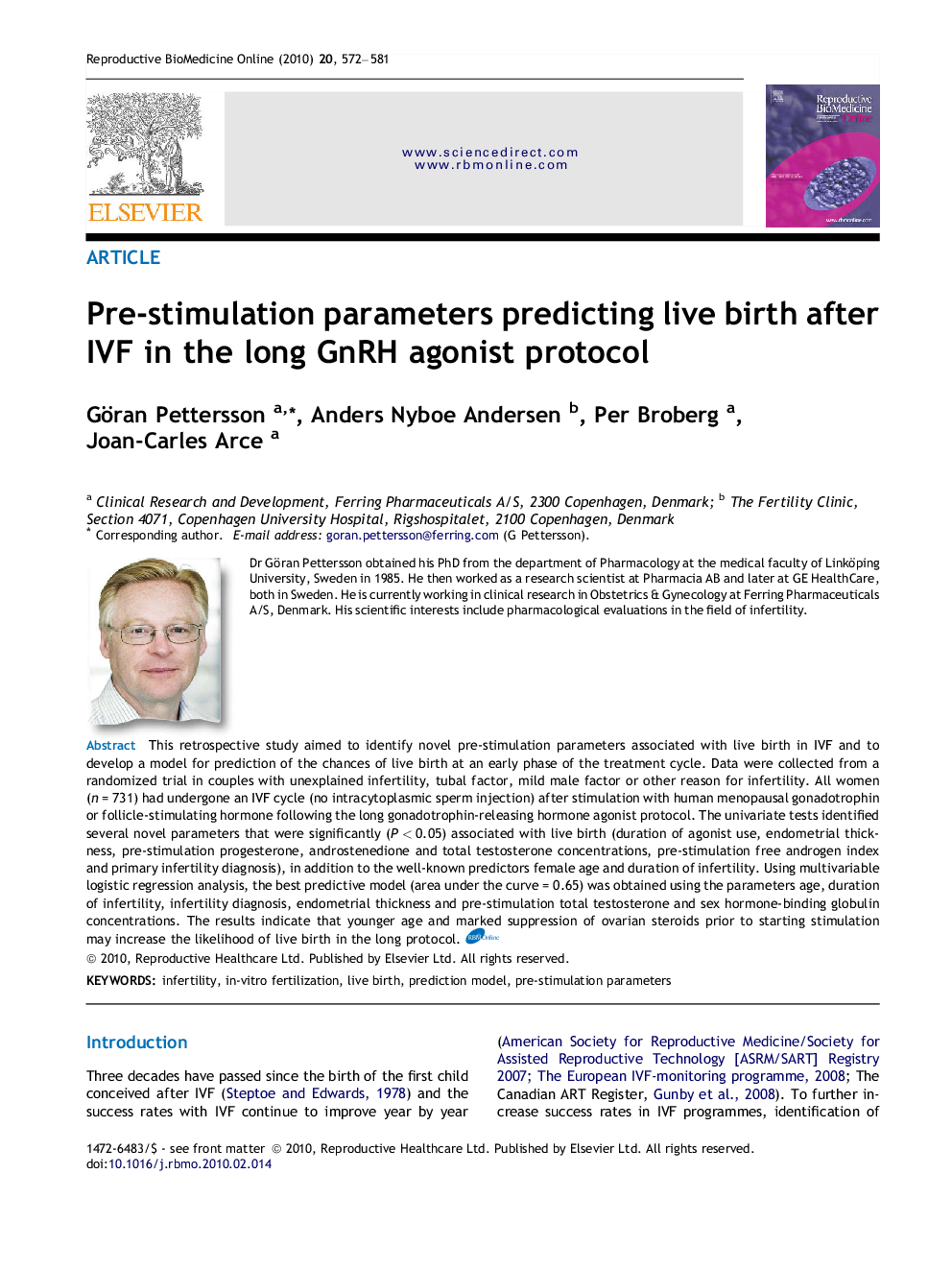| Article ID | Journal | Published Year | Pages | File Type |
|---|---|---|---|---|
| 3971699 | Reproductive BioMedicine Online | 2010 | 10 Pages |
This retrospective study aimed to identify novel pre-stimulation parameters associated with live birth in IVF and to develop a model for prediction of the chances of live birth at an early phase of the treatment cycle. Data were collected from a randomized trial in couples with unexplained infertility, tubal factor, mild male factor or other reason for infertility. All women (n = 731) had undergone an IVF cycle (no intracytoplasmic sperm injection) after stimulation with human menopausal gonadotrophin or follicle-stimulating hormone following the long gonadotrophin-releasing hormone agonist protocol. The univariate tests identified several novel parameters that were significantly (P < 0.05) associated with live birth (duration of agonist use, endometrial thickness, pre-stimulation progesterone, androstenedione and total testosterone concentrations, pre-stimulation free androgen index and primary infertility diagnosis), in addition to the well-known predictors female age and duration of infertility. Using multivariable logistic regression analysis, the best predictive model (area under the curve = 0.65) was obtained using the parameters age, duration of infertility, infertility diagnosis, endometrial thickness and pre-stimulation total testosterone and sex hormone-binding globulin concentrations. The results indicate that younger age and marked suppression of ovarian steroids prior to starting stimulation may increase the likelihood of live birth in the long protocol.
